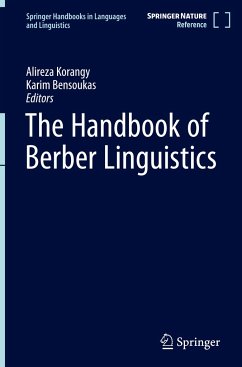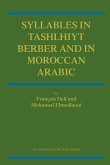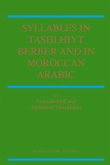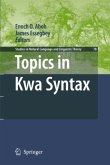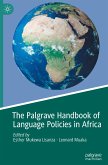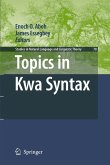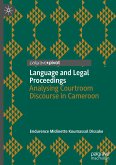This handbook is the largest and most comprehensive publication on Berber linguistics to date, covering the variety of Berber dialects and related linguistics trends. Extensive and diverse at thematic and theoretical levels, with the aim of deepening students and scholars' understanding of the workings of Berber as a linguistic phenomenon, it explores a multitude of angles through which the diachronic and synchronic intricacies of Berber varieties can be examined. It enables a better understanding of the issues in the various components of North African languages, as well as their theoretical and typological significance and implications. The work covers phonology and phonetics, morphology and syntax, semantics and pragmatics, socio-linguistics and dialectology, language teaching and psycholinguistics, lexicology, language contact and comparative linguistics, historical linguistics and etymology. Sub-themes explored include prosody, ideophones (and expressive language in general), morpho-syntactic categories, sociolinguistic variation and several other seminal interdisciplinary explorations. The chapters reflect the diversity of Berber varieties and include up-to-date scholarship by leading Berberists, with varieties including Figuig, Kabyle, Senhaja, Siwa, Standard Moroccan Amazigh, Tamazight, Tarifit, Tashlhit, Touareg, Tunisian Berber, Znaga, as well as Proto-Berber. A large geographical territory is covered, including Algeria, Egypt, Libya, Mali, Mauritania, Morocco, and Tunisia. With contributions from these Berber-speaking countries and their diaspora, there are also chapters from prominent Berber scholars from America, Australia and Europe. To this end, the volume includes perspectives and theories from different schools of linguistics. In including original French contributions and English translations of research from top scholars in the field, the book includes another vital dimension in terms ofthe resources, and sources. As a comprehensive reference, this work is of interest to North Africanists from various disciplines, including anthropologists, linguists, and sociologists, but particularly linguists interested in endangered languages, and those working on the historical and comparative study of the Afroasiatic language phylum.
Hinweis: Dieser Artikel kann nur an eine deutsche Lieferadresse ausgeliefert werden.
Hinweis: Dieser Artikel kann nur an eine deutsche Lieferadresse ausgeliefert werden.

